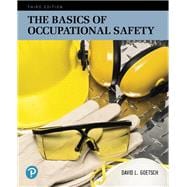For courses in industrial safety and industrial safety and health.
Complete guide to basic workplace safety, across technical fields
The Basics of Occupational Safety fills the need for a practical teaching resource introducing students to the basics of workplace safety. In his hallmark easy-to-read style, Goetsch examines the latest standards of OSHA, NIOSH, and other US regulatory bodies in the context of new and emerging industry trends. The text suits students in secondary and postsecondary technical programs who need one occupational safety course, such as students of manufacturing, welding, carpentry, and electronics.
The 3rd edition is a major revision encompassing new and revised regulations and other updates of importance to students of occupational safety and health.











